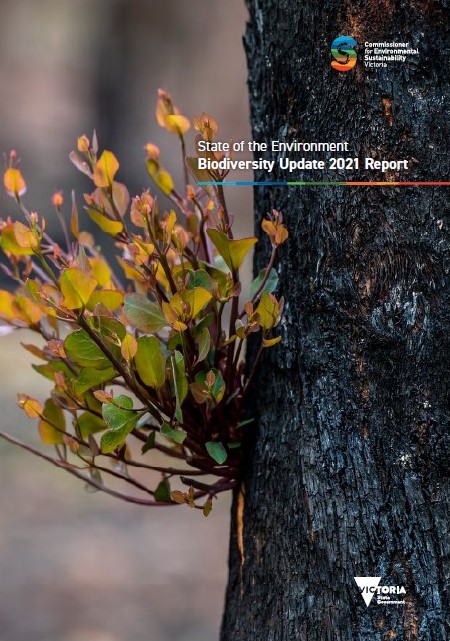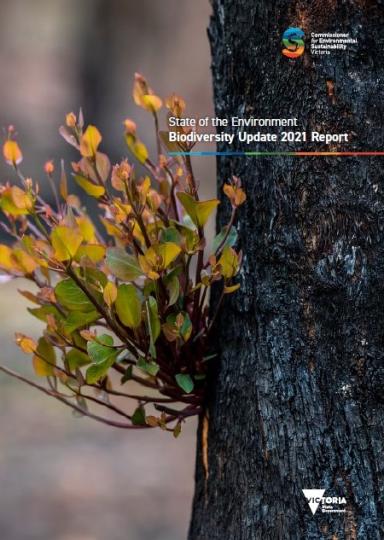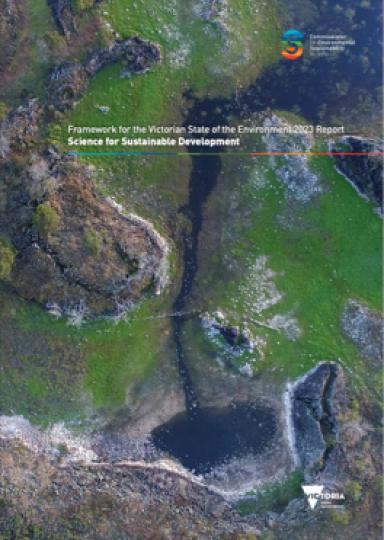Given the severity and impact of the 2019-20 black summer bushfires on Victoria’s ecosystems, this report has been prepared ahead of the next Victorian State of the Environment Report due in 2023.
The Report explained
This State of the Environment Biodiversity Update 2021 Report has two parts. View a summary of the science and key findings by theme.
Report structure
Part I
- Summarises the report’s structure, and provides summaries of the assessments of Status, Trend and Data Confidence and key findings.
- Summarises the public policy context for biodiversity conservation and management in Victoria (discussed in detail under each indicator theme in Part II) and outlines current and emerging research supporting the scientific assessments.
- Concludes with indicator report card summaries that include the metrics for each indicator.
Part II
- Contains the assessments for the 43 indicators that were reviewed.
- Concludes with a list of the key references used in preparing the report.
Report themes
The 43 indicators reviewed have been grouped into seven themes:
- Fire
- Climate change
- Invasive plants and animals
- Threatened species and communities
- Wetlands and rivers
- Forests
- Victoria’s biodiversity targets
Report findings in summary
- Indicators from the Biodiversity (35), Forests (2), Fire (4) and Climate Change (2) chapters from State of the Environment 2018 Report are updated.
- The report compares the 2018 and 2021 assessments for all indicators.
- Where new data is available, assessments were updated.
- Where no new data is available since 2018, the report includes a summary of the 2018 assessment and updated commentary.
- Data availability remains a challenge with 63% of indicators assessed as having insufficient, low or moderate data confidence (compared to 65% in 2018).
- Except for the Net Gain target, there was insufficient data to report on the Biodiversity 2037 targets.
The immediate government and community biodiversity response and recovery actions following the 2019–20 bushfires were well-resourced, well-coordinated and targeted threatened species.
This brought forward some of the intended actions in the implementation of Protecting Victoria’s Environment: Biodiversity 2037, the state government’s plan released in 2017 to address the long-term decline in Victoria’s biodiversity.
Our reporting is informed by science
The scientific assessments of the indicators rely on publicly available scientific data that include reports, professional journal articles, submissions to Parliamentary and other government inquiries, citizen science projects and interviews with experts in relevant fields.
The data are subsequently assessed and synthesised by the science team supporting the Commissioner for Environmental Sustainability.
The assessments have been conducted on a statewide basis and have evaluated the impact of the 2019–20 bushfires on Victoria’s biodiversity.
The report also uses important science contributed by the community, such as the Victorian National Parks Association and local East Gippsland conservation groups’ report After the Fires: protecting our forest refuges – critical areas for protecting fauna and flora affected by the 2019–20 bushfires.
Science for Sustainable Development is an important milestone. It demonstrates our ongoing commitment to developing an environmental reporting framework for Victoria with the United Nations Sustainable Development Goals at its core.
Science for Sustainable Development continues our commitment to prepare best-practice science-based reports to inform policy-makers, scientists and the wider Victorian community.
This approach provides structure to guide all state of environment reports that will be prepared by the Commissioner during the current reporting cycle to 2024 and includes collaborative methods for working with key stakeholders.




